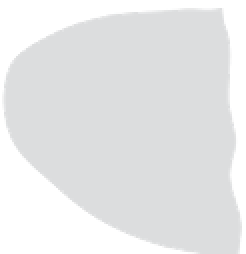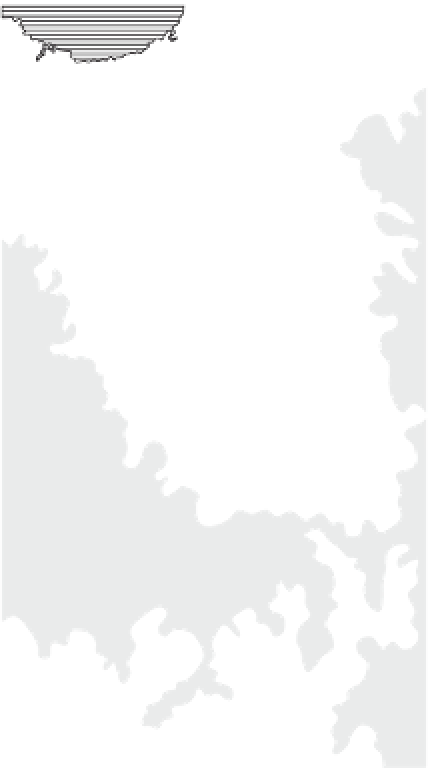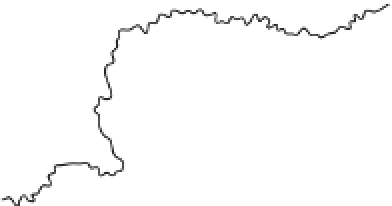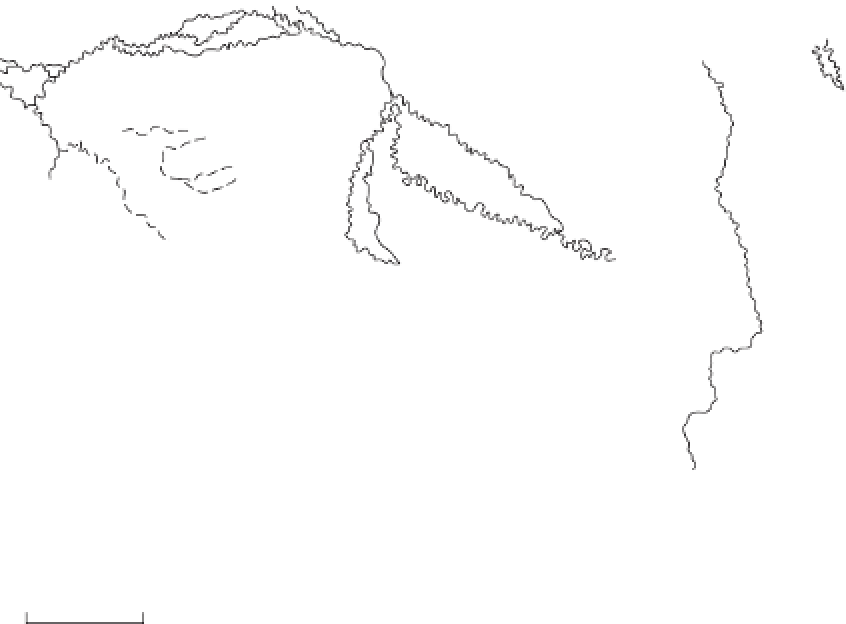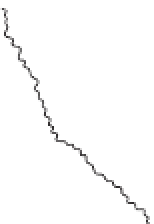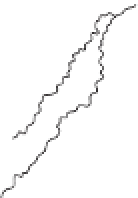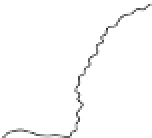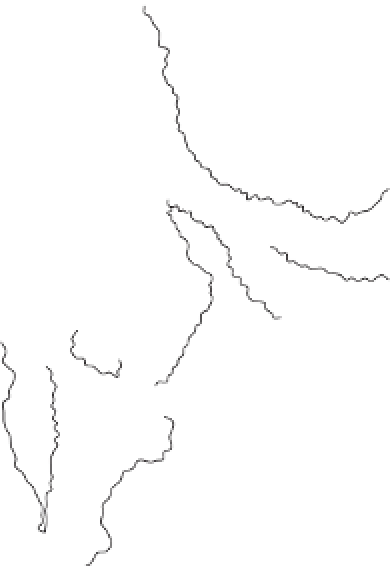Geology Reference
In-Depth Information
(
a
Karumba
(
b
Deniliquin
Wa cool
Cadell
tilt block
Cadell
tit lock
Cloncurry
Echuca
Bama
Sandhills
20 km
100 km
Over 200 m
Figure 5.20
River diversions in Australia. (a) The diversion of the Murray River near Echuca, Victoria. (b) The diversion
of the Diamantina River, north Queensland, owing to the Selwyn Upwarp.
Source:
After Twidale and Campbell (1993, 80, 346)
(Figure 5.21). The present radial drainage pattern is a
response to the doming of Carboniferous, and possi-
bly Cretaceous, limestones. The streams cut through
the base of the Carboniferous limestone and into the
underlying Palaeozoic folded metamorphic rock and
granite. The radial drainage pattern has endured on the
much-deformed structure of the bedrock over which the
streams now flow, and is anomalous with respect to their
Palaeozoic base.
flowing around the snout of a plunging anticline, for
example, may erode down a few hundred metres and be
held up by a harder formation (Figure 5.22). The stream
may then be diverted or, if it is powerful enough, incise
a gorge in the resistant strata and form a breached snout.
LANDFORMS ASSOCIATED WITH
FAULTS AND JOINTS
Faults and joints are the two major types of fracture found
in rocks. A
fault
is a fracture along which movement
associated with an earthquake has taken place, one side of
the fault moving differentially to the other side. They are
Persistent rivers
Streams adjusted to a particular structure may, on down-
cutting, meet a different structure. A strike stream

